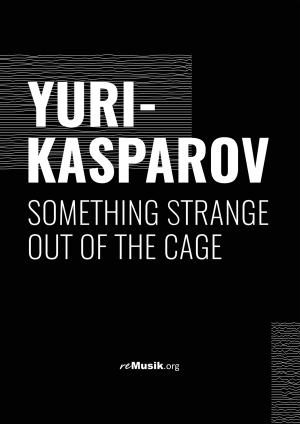Katharina Rosenberger:
«I love to build bridges to the past»
Katharina Rosenberger:
«I love to build bridges to the past»
Participant of the festival reMusik.org, composer Katharina Rosenberger spoke about her attitude to early music, her love of nature, natural forms, and about her piece Approximation.
— First of all I’d like to ask you about your study under the mentorship of Tristan Murail. You are working with the nature of sound like him, but you are interested in other points: relationship with listener, different media etc. Please, explain how you create your main line in music and how Murail influenced you?
Tristan Murail’s work is very sound oriented, studying the behavior of a sound and it`s unfolding in space and in the perception of the listeners, or in psychoacoustics. These were elements I integrated in my own work. I always have been interested in relations created in musical praxis. It is an art form that only comes alive through relationships created… the solitary act of composition, then concurrently or during rehearsals the collaboration with performers, the moment when music is performed the relationship to the audience is vital, to the space, the acoustics. If you then work in an installation setting, all these relationships get amplified as the hierarchy of interaction shifts.
— Let’s talk about TEXTUREN. You use here interesting texts based on botanical description. Why do you choose this one. And which role does it play in your work commonly?
I am interested in nature, in organism, in nature’s symmetries or geometries, in ecology, in it`s beauty and how easily we humans can destroy it. I do have an entire catalogue of pieces that tie in content and form into nature: TEXTUREN, torsion for solo piano, REIN for orchestra, glimmer, a new piece for accordion and percussion, the installation and electro acoustic work electric fields, based on neuronal systems… also quartet – bodies in performance, on the anatomy of performers.
— According to your works one of the main themes for you is body. I’m very impressed by video documentation of quartet bodies. Did you have an idea for a real performance based on quartet bodies?
Yes, I have thought about it to combine the installation with real performances or creating a lighting set up so that the performers become an almost “live” animated and sounding “tableau”. Thinking of the lighting of Caravaggio paintings. I love them!
— In TEMPI AGITATI you were inspired by Renaissance and Baroque music. Why do you choose this music? How did the old composers influence you? What does attract you to old music?
I love to build bridges to the past. I think, contemporary music has a lot in common with, particularly, Renaissance music and it`s chromatic and modal characters. Also the way that – now particularly in TEMPI AGITATI – text is integrated into the music, is very interesting to me. Cipriano de Rore and Adrian Willaert used a lot the phonological aspect of the words, how they sounded and what they have meant and integrated these aspects in very conscious, dramatic and musical ways. Brilliant!
— I’ve read in your interview that you really like the idea of drawing the audience close to the sound and giving them an opportunity to create direct movement by itself, to create experience for them and share it. Is it the reason why you work a lot in the museums and galleries? What do you think about concert halls and their future role in interdisciplinary music projects?
If the future of the concert halls is that they become more modular, then they would serve well intermedia efforts of consciously working out spatialization, the distribution of listeners and musicians in space, as well as projections.
— We will listen world premiere of your piece approximations on the festival reMusik.org. It’s interdisciplinary piece that includes the ensemble, video and electronics. Tell us a little about this work? How do music and videos interact with each other?
Actually, we have decided to not include video as the music and the performance of the musicians was already so rich – we wanted to keep the focus on the sounds and harmonies. Approximations is built around violoncello multiphonics developed by the cellist Ellen Fallowfield of the Ensemble Lemniscate. In short, the harmonies of the ensemble are built around her pure intervals. In that I do slide in and out of the well temperate tuning system into Fallowfield’s multiphonics. I love reMusik.org because of it`s strong communal sense. The festival really allows for encounters between the audience, the artists and the students. The conversations I have had with students and fellow artists were truly inspiring and unforgettable.
















